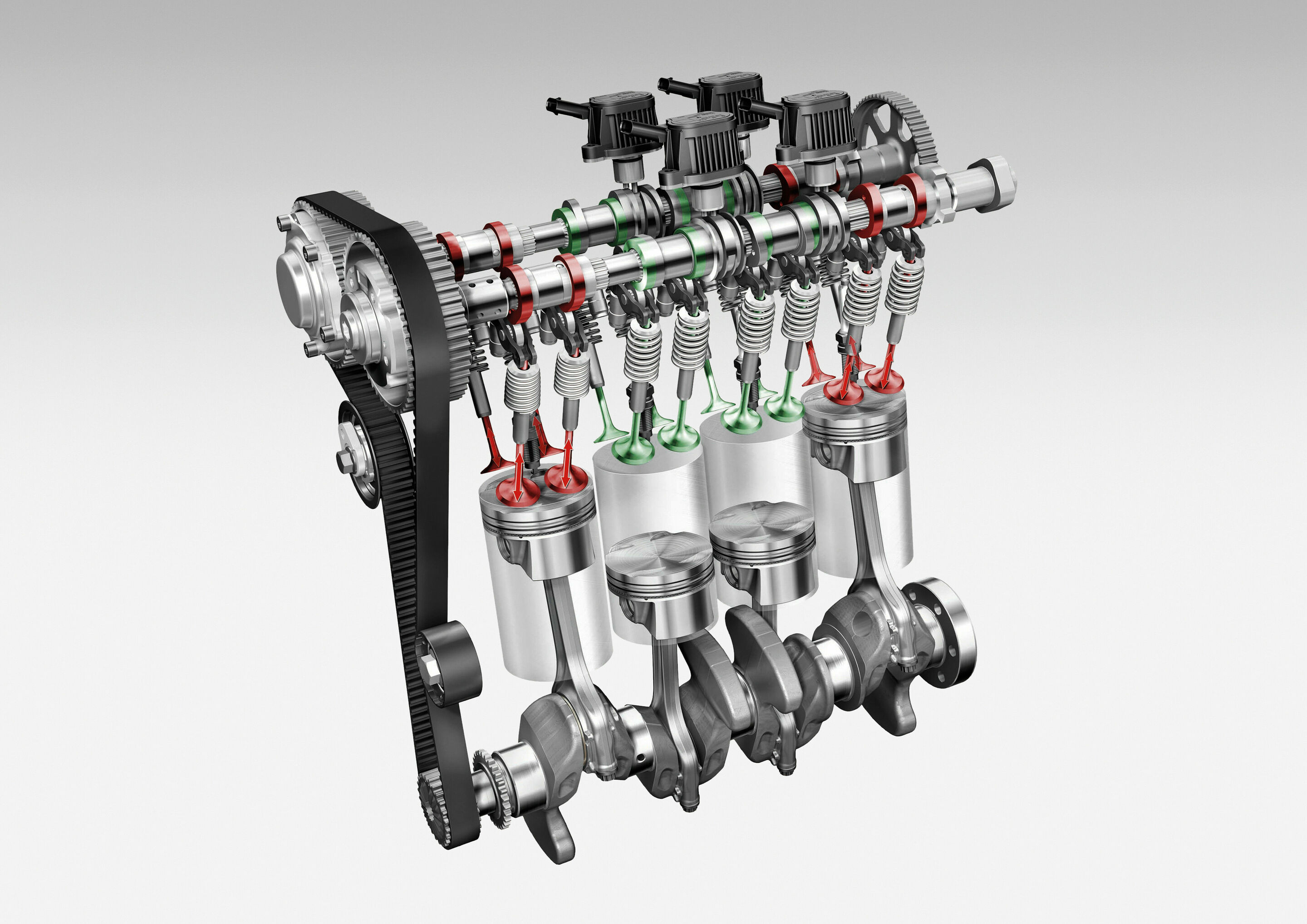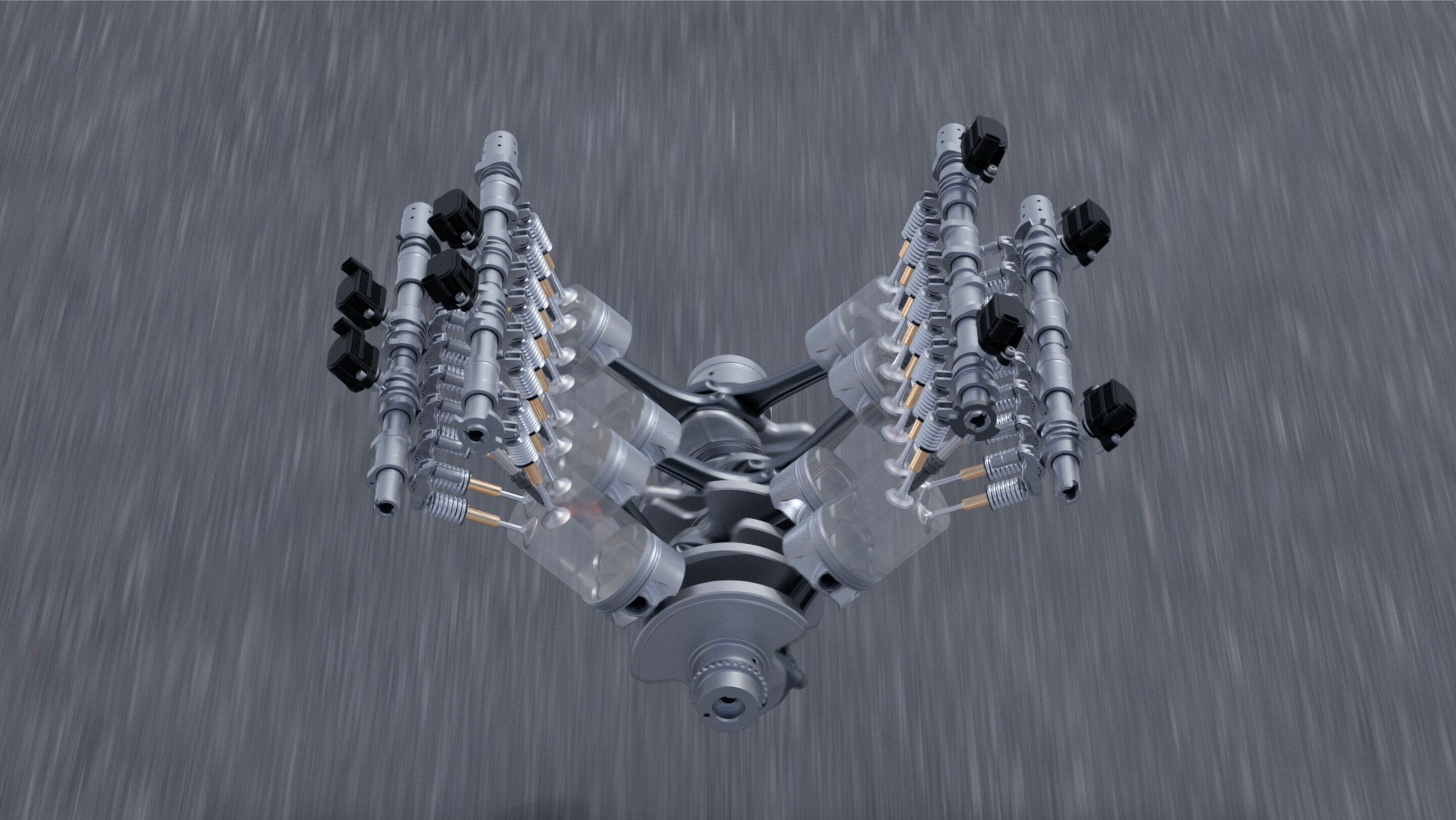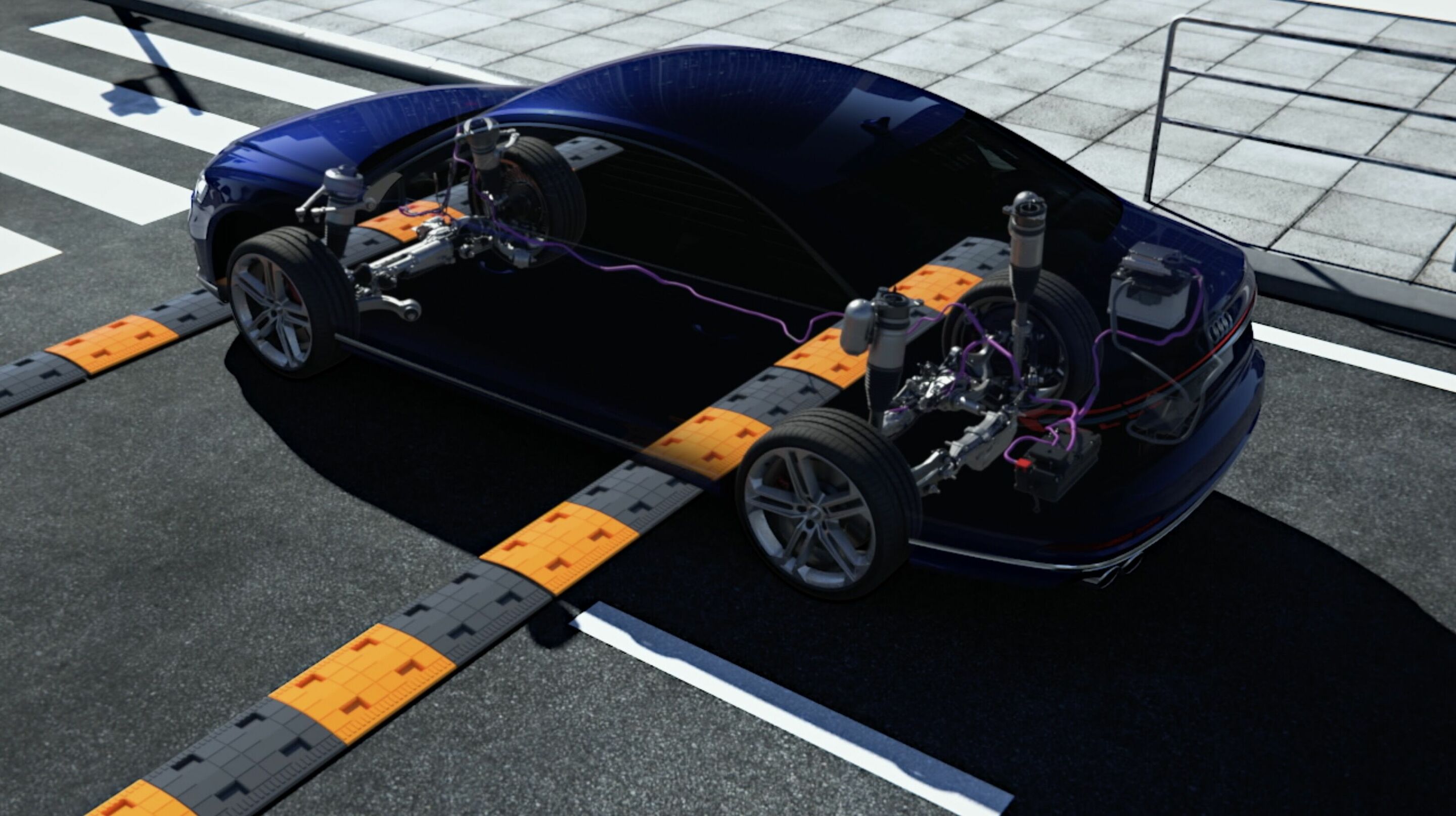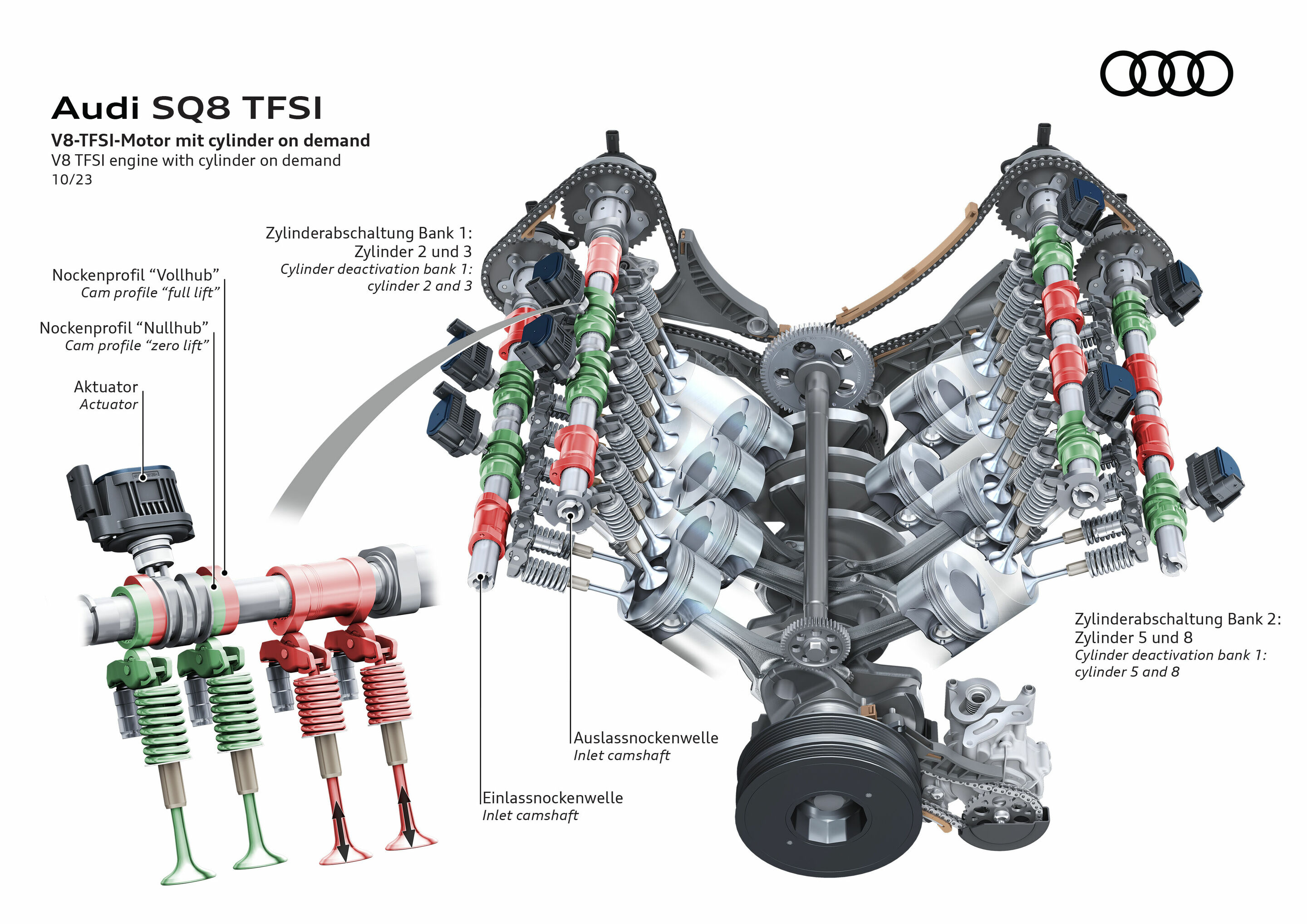Search
All search results for "cylinder on demand"
(110)

Significantly expanded standard equipment increases comfort, selectable daytime running light signatures and flexible subscriptions for functions on demand ensure a high degree of individualization. With a higher battery capacity, DC charging at fast-charging stations and an electric range of up to 143 kilometers (88.9 miles), the Audi A3 Sportback TFSI e combines dynamic driving performance with increased comfort. The A3 allstreet, a distinctive crossover, is a new addition to the portfolio. With its characteristic off-road look, three centimeters more ground clearance than the A3 Sportback and the raised seating position, it offers an SUV-like driving experience and a high level of functionality. The Audi S3 is displaying a new level of driving dynamics: Its more powerful turbocharged four-cylinder engine with 333 PS and 420 Nm combines with the torque splitter, new steering knuckles, and optimized steering for strong performance and agile handling. The Audi RS 3, the top model and pinnacle of performance, is now even sportier with the upgrade.
 Audi A6 Avant
Audi A6 Avant
It impresses with a cleverly designed body concept and lots of variability, offering plenty of space for everyday life as well as for demanding recreational activities. Whether on long trips or city driving, the adaptive air suspension and all-wheel steering ensure a smooth ride and sporty handling in equal measure. Additional highlights include intuitive operating and infotainment concepts, new digital lighting technology, and intelligent driver assistance systems.

The Audi R8’s ten-cylinder engine has long since achieved cult status and is one of the last naturally aspirated engines in its segment. Countless racing victories and strong performance in day-to-day use speak for themselves. The 5.2 FSI brings the car’s racing genes to life and has been given a further 30 PS boost in the R8 V10 performance RWD and now generates an additional 10 Nm of torque at 550 Nm. The high-performance engine made its debut on the race track in GT3 racing in the Audi R8 LMS in 2009. The R8 LMS ultra followed in 2012. Finally, the second-generation R8 LMS came on the market in 2015 and received a comprehensive upgrade in the fall of 2018. The R8 LMS GT4 has expanded Audi Sport’s customer racing lineup since the beginning of 2018. In both GT categories, the 5.2 FSI only differs slightly from the standard engine. It forgoes dual injection, the intake system features an air restrictor, and the control unit’s maps and bearing shells have been modified. With a service interval of 10,000 kilometers and a mileage of 20,000 kilometers until the first inspection, the 5.2 FSI sets standards in racing.
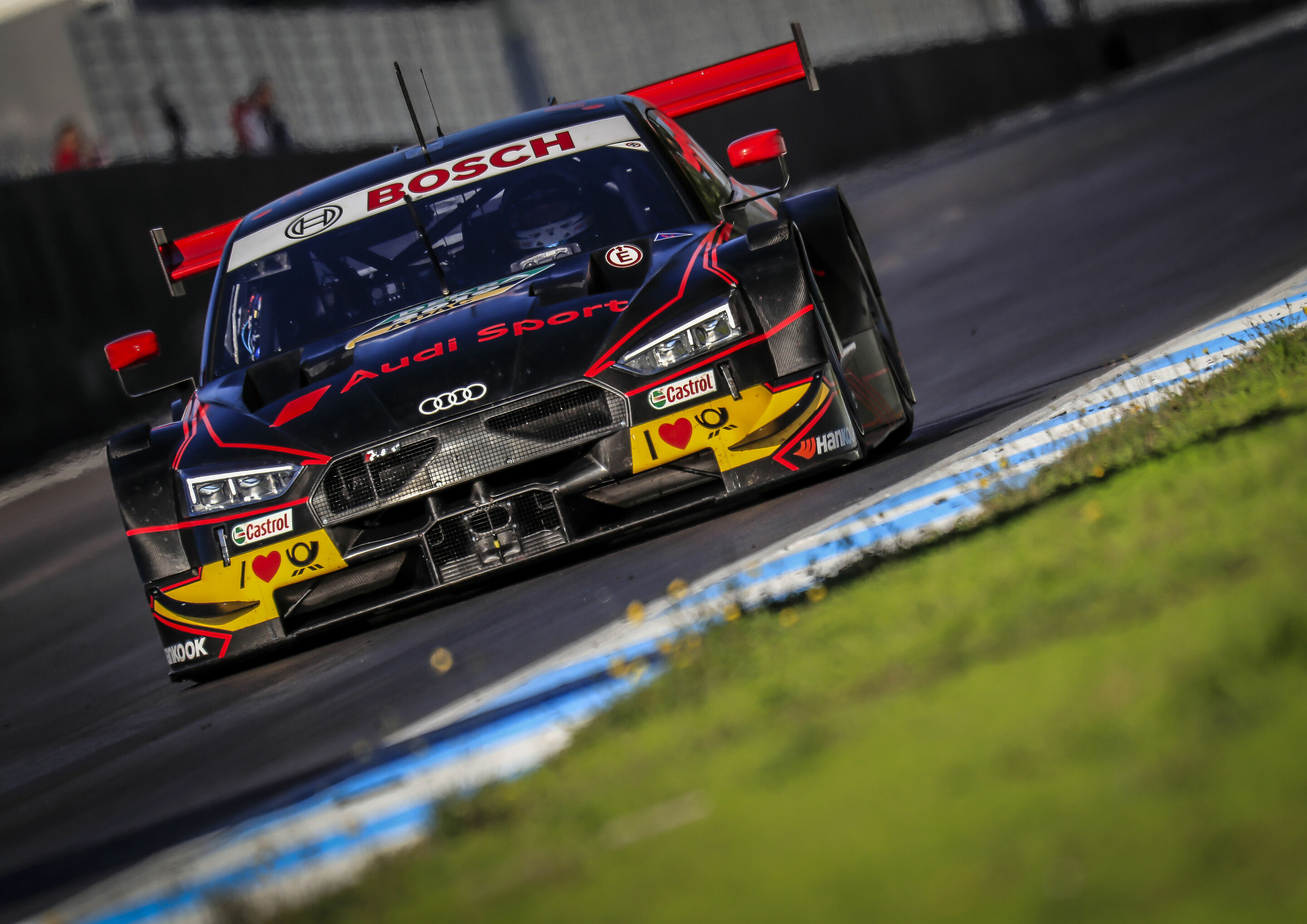 Clearly more power and fantastic sound: Audi drivers enthuse over turbo DTM
Clearly more power and fantastic sound: Audi drivers enthuse over turbo DTM
New Audi RS 5 DTM on track for the first time Two-liter four-cylinder turbo engine with some 600 horsepower Nico Müller, René Rast and Mike Rockenfeller thrilled after initial test
For Nico Müller, René Rast and Mike Rockenfeller, Christmas came a little earlier this year: On the racetrack at Estoril, Portugal, the three Audi drivers had their first opportunity to test the new Audi RS 5 DTM, ringing in the turbo era of the DTM. All three climbed out of the cockpit with radiant smiles.
“The new DTM car has terrific muscle and momentum,” enthused Nico Müller who on Monday took the wheel on the first of the three test days. “The turbo engine has awesome thrust. We’re going to see speeds that the DTM has never seen before. The power boost is really noticeable. This is going to make even greater demands on us drivers. The car also looks really fast when you stand trackside. The sound is fascinating too. I definitely wouldn’t want to swap the turbo for the old V8 aspirated engine again.” The two DTM Champions, Mike Rockenfeller and René Rast, expressed similar opinions following their first test kilometers in the new Audi RS 5 DTM: “As a race driver, you always welcome more power. The new car feels like a go-kart and is huge fun,” said Rast. “I love the turbo engine and am sure the fans are going to love it too,” Rockenfeller agreed. “The sound is great and the car a lot faster. We can all look forward to next year.” The new Class 1 regulations coming into effect in the Japanese Super GT Championship in 2020 as well are ringing in a new era in the DTM in 2019 primarily in terms of technology. The previous naturally aspirated V8 engines will be replaced by newly designed racing engines with four cylinders, two liters of displacement plus turbocharging that deliver a good mix of output and efficiency. At Audi, particularly the four-cylinder two-liter turbo units are important internal combustion engines in production cars worldwide.
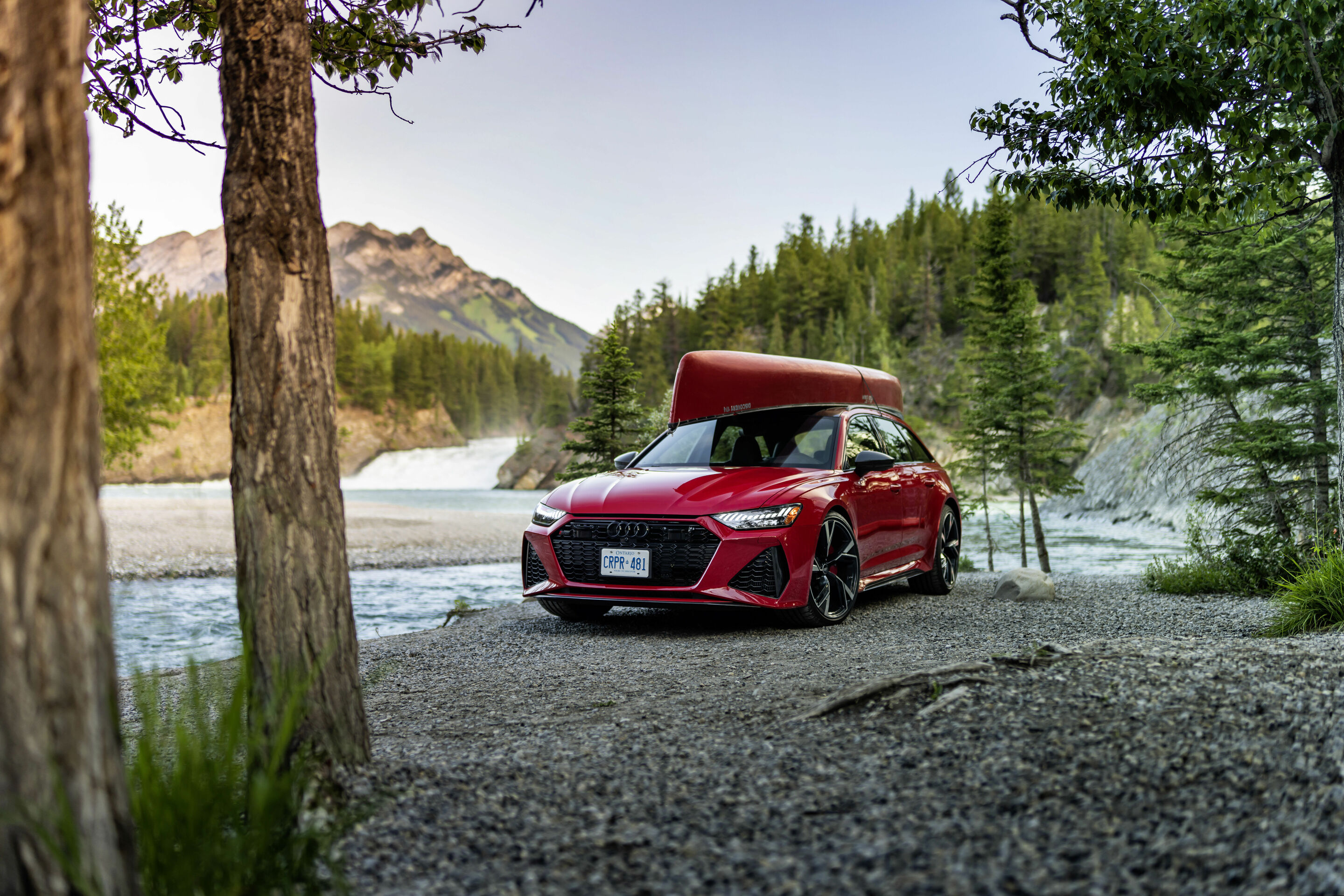
Combination of pioneering performance and outstanding everyday usability have always been trademark features of an RS 6 The current RS 6 Avant – now available in the US for the first time – is the global market leader in its segment with a uniquely wide body From the C5 to the C8, Dynamic Ride Control suspension ensures first class driving dynamics
One car has been exciting Audi Sport GmbH and a worldwide fanbase like no other for 20 years: across four generations, the Audi RS 6 has set the tone for high-performance station wagons with impressive performance and outstanding everyday usability. It owes the success of its underlying concept from 2002 to its double-charged engine and all-wheel drive. The basic concept has been the same across every generation of the RS 6. Again and again, it sets new standards in its competitive environment as well. Technical Vorsprung also turns up in other places, such as Dynamic Ride Control suspension. It has been used in other RS models from Audi for a long time.
The C5: a desire for performance in the upper mid-range Shortly after the start of the new millennium, what was then quattro GmbH (now Audi Sport GmbH) was faced with the question of which car the staff would give a sporty renovation to after the RS 4. It was an opportune moment for the Audi A6. The first generation (C5) underwent a product enhancement in 2001 and Audi also wanted to add more power under the hood in its upper mid-range. The brand was self-aware and motorsports were in high demand. Audi drove its way to the winners stand on the first try at its premiere in the legendary 24-hour Le Mans in 1999. The company with the four rings made history again in 2000, 2001, and 2002.
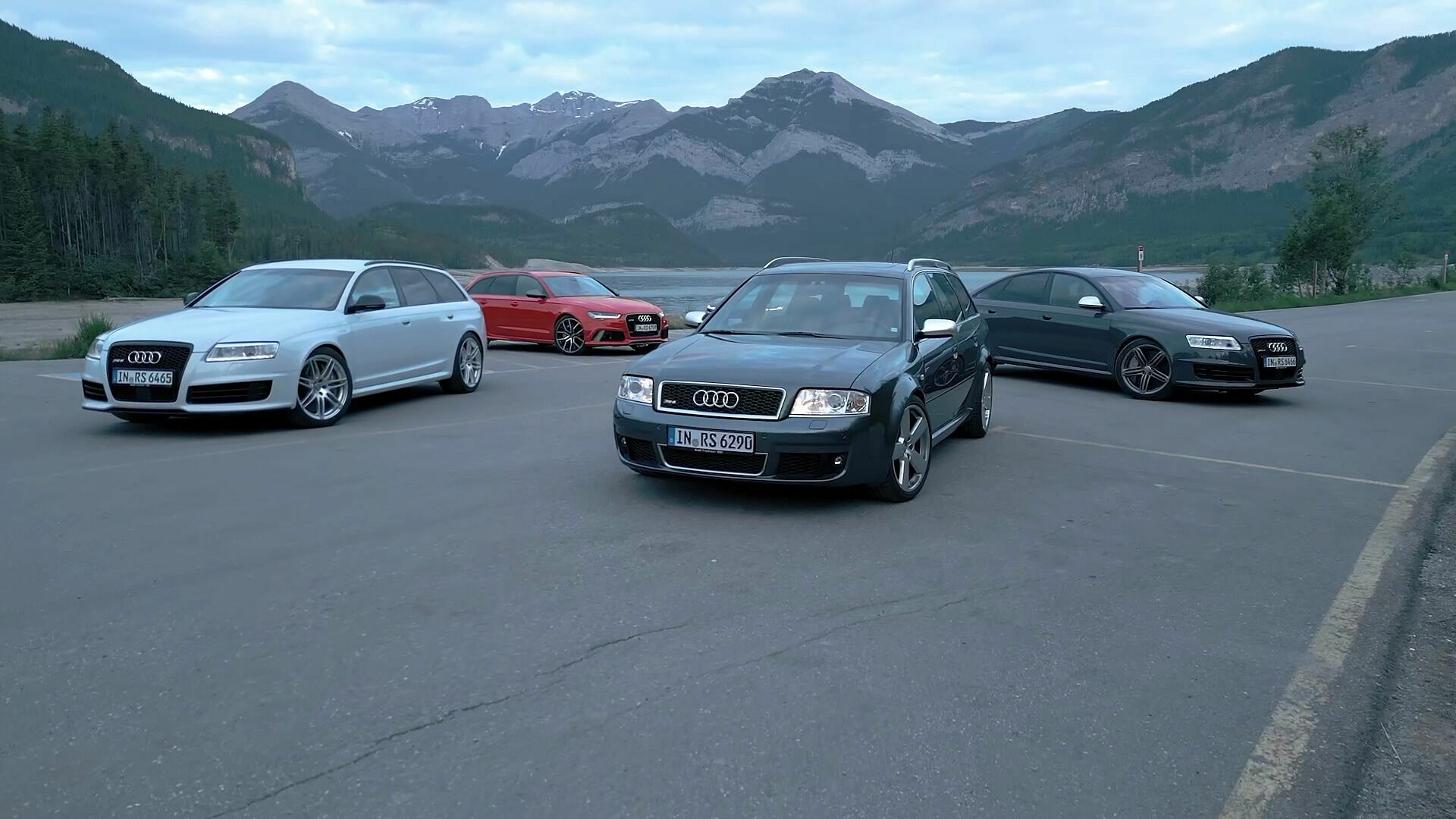
Combination of pioneering performance and outstanding everyday usability have always been trademark features of an RS 6 The current RS 6 Avant – now available in the US for the first time – is the global market leader in its segment with a uniquely wide body From the C5 to the C8, Dynamic Ride Control suspension ensures first class driving dynamics
One car has been exciting Audi Sport GmbH and a worldwide fanbase like no other for 20 years: across four generations, the Audi RS 6 has set the tone for high-performance station wagons with impressive performance and outstanding everyday usability. It owes the success of its underlying concept from 2002 to its double-charged engine and all-wheel drive. The basic concept has been the same across every generation of the RS 6. Again and again, it sets new standards in its competitive environment as well. Technical Vorsprung also turns up in other places, such as Dynamic Ride Control suspension. It has been used in other RS models from Audi for a long time.
The C5: a desire for performance in the upper mid-range Shortly after the start of the new millennium, what was then quattro GmbH (now Audi Sport GmbH) was faced with the question of which car the staff would give a sporty renovation to after the RS 4. It was an opportune moment for the Audi A6. The first generation (C5) underwent a product enhancement in 2001 and Audi also wanted to add more power under the hood in its upper mid-range. The brand was self-aware and motorsports were in high demand. Audi drove its way to the winners stand on the first try at its premiere in the legendary 24-hour Le Mans in 1999. The company with the four rings made history again in 2000, 2001, and 2002.
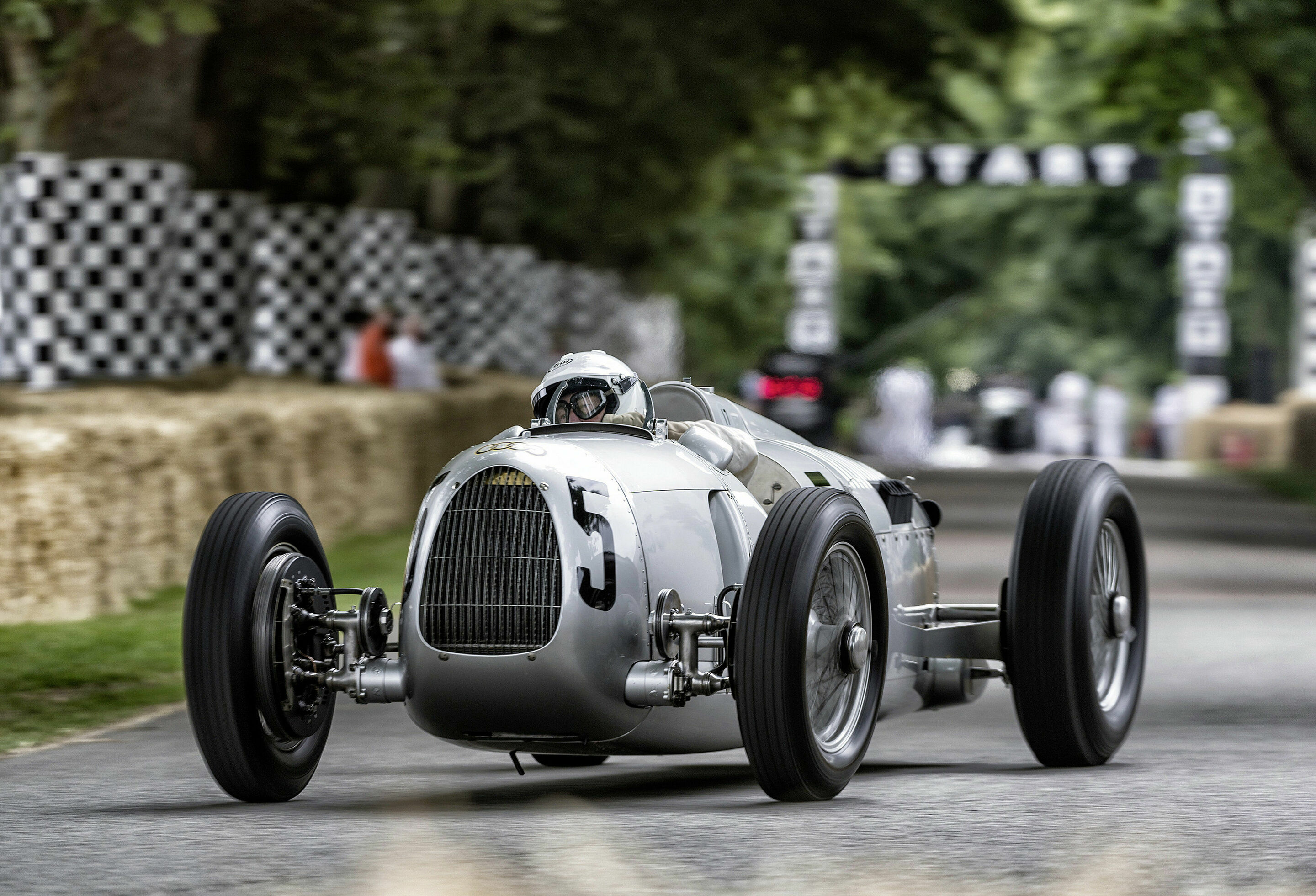 Audi Tradition in an Auto Union Silver Arrow at the silver jubilee
Audi Tradition in an Auto Union Silver Arrow at the silver jubilee
25th edition of the Goodwood Festival of Speed in England Audi Tradition takes an Auto Union Type C racing car and a Wanderer Streamline Special to the biggest historic motor racing event
Silver cars on their way to the silver jubilee: the Goodwood Festival of Speed, the world's largest historic motor racing event, celebrates its 25th edition from 12 to 15 July. Audi Tradition is participating in a fitting way with two silver-colored cars from its more than 100 years of history. An Auto Union Type C racing car from 1936 and a 1939 Wanderer Streamline Special will be competing in the event.
For the 200,000 visitors who are expected at Goodwood, the Auto Union Type C is an old friend – the model's presence at the Festival of Speed has always been one of the highlights of the event. With its 16 cylinders, 520 hp, top speed of 340 km/h and the engine located behind the driver, this racing car was viewed as a futuristic marvel when it was first presented in 1936. In the same year, Bernd Rosemeyer won the European driving championship and the German hill-climb championship. This year, Hans-Joachim Stuck will be taking the wheel of Audi Tradition's rebuilt Type C. It will be a very special moment for the former Audi Sport driver: in the 1930s, Stuck's father Hans was a member of the Auto Union team and when it came to hill races, he was almost unbeatable. Every time he drives a Silver Arrow, Stuck junior dons his father's original gloves and racing goggles. Audi Tradition is also sending another jubilee guest of honor to the race track: the Wanderer Streamline Special will be presented for the first time at Goodwood. Eighty years ago, Auto Union AG enrolled three of these models for what was then the world's toughest rally, Liège-Rome-Liège. The car had to do at least 50 kilometers per hour over the entire 4,000-kilometer course. On this race of around 100 hours, the drivers hardly stopped except to refuel.
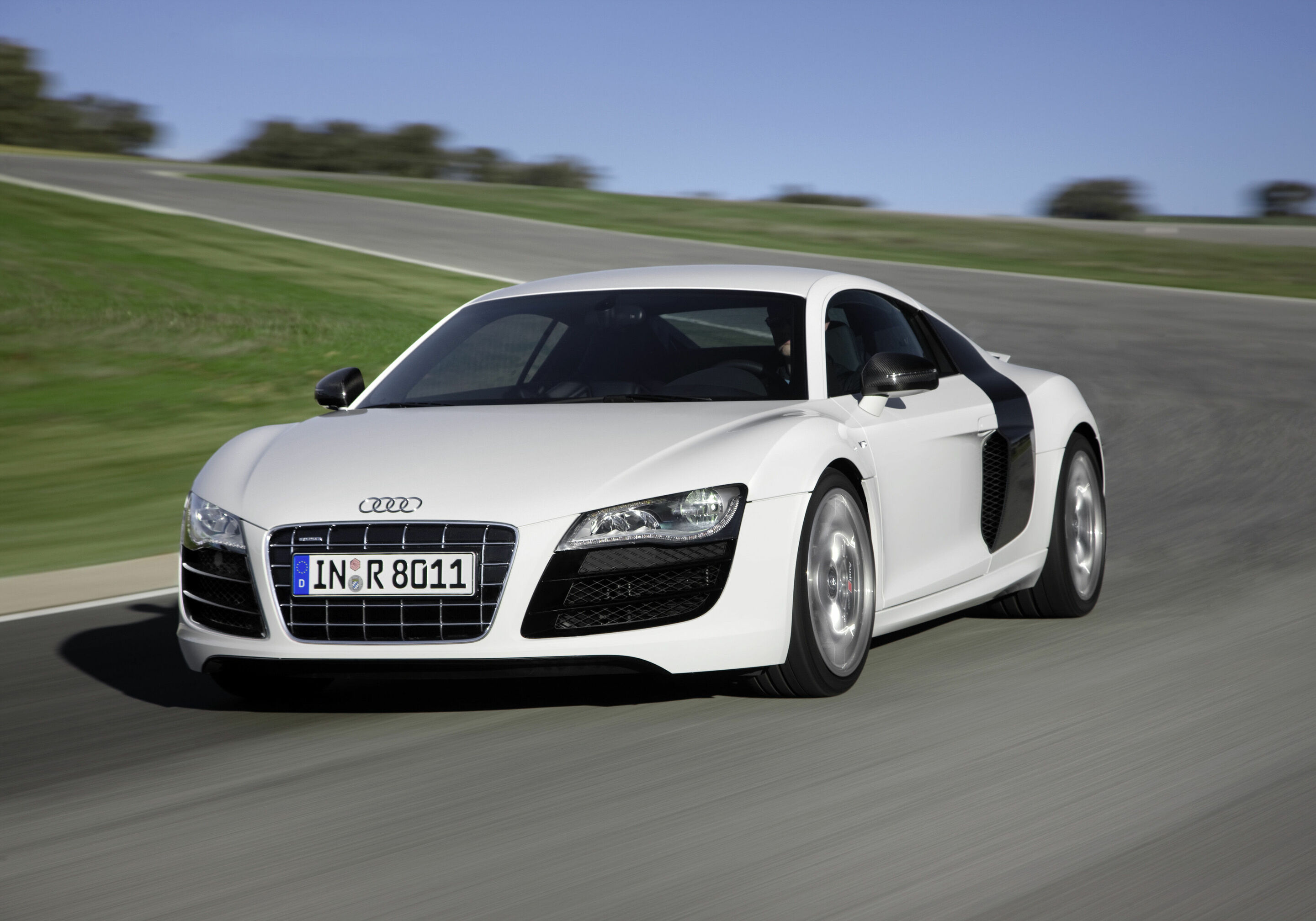 Homage to ten years of the V10 engine: the Audi R8 V10 Decennium
Homage to ten years of the V10 engine: the Audi R8 V10 Decennium
It stands for ten years of fascination on the road and success in motorsport.
Right from the exterior design, the Audi R8 V10 Decennium makes its character abundantly clear. The special model is available as a coupé and painted in exclusive Daytona Gray, matt effect. The milled 20-inch wheels and the intake manifold of the 5.2 FSI engine are finished in matt bronze. The front spoiler, the side sills and the diffuser are painted in gloss black, supplemented by black Audi rings and badges on the exterior. The side blades and the exterior mirror housings are made from gloss carbon fiber. Alternatively, there is a choice of the exterior colors Daytona Gray, pearl effect; Suzuka Gray, metallic; Floret Silver, metallic; Mythos Black, metallic; Ascari Blue, metallic and Kemora Gray, metallic. The interior of the Audi R8 V10 Decennium is also finished entirely in black, with the inlays in gloss carbon fiber adding highlights. The quilted rhombus pattern stitching on the sport seats is finished in gloss black; the contrasting stitching in a gloss copper tone. The selector lever and the steering wheel – with Alcantara rim and black 12 o’clock marking – feature copper-colored stitching, as do the center armrest, the door armrest and the door rail. A “Decennium” logo adorns the center console, the doors, the inlays in the gloss carbon fiber door sill trims as well as the logo projector. The badge in the center console stands out visually from the gloss carbon fiber around it. It comes with a partially matt finish – a process patented by Audi. The surface of the material is roughed a few thousandths of a millimeter using a special powder. The door light projects the “Decennium” logo onto the ground, supplemented by the model’s sequential limited-edition number. As with all R8 variants, the Audi virtual cockpit and the MMI navigation plus come standard. The naturally aspirated 5.2 FSI in its most powerful output rating forms the heart of the R8 V10 Decennium.


